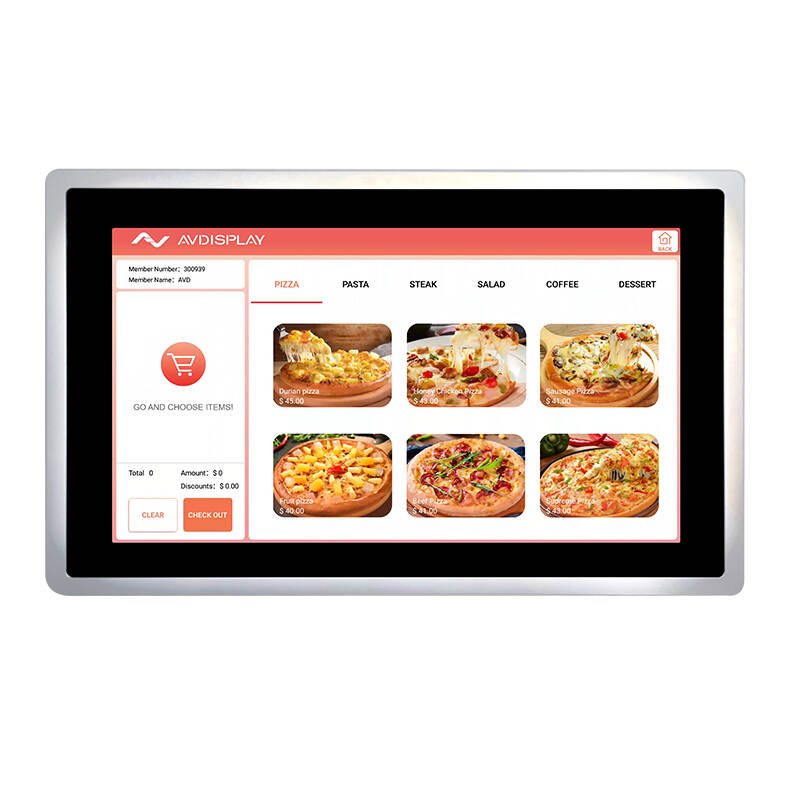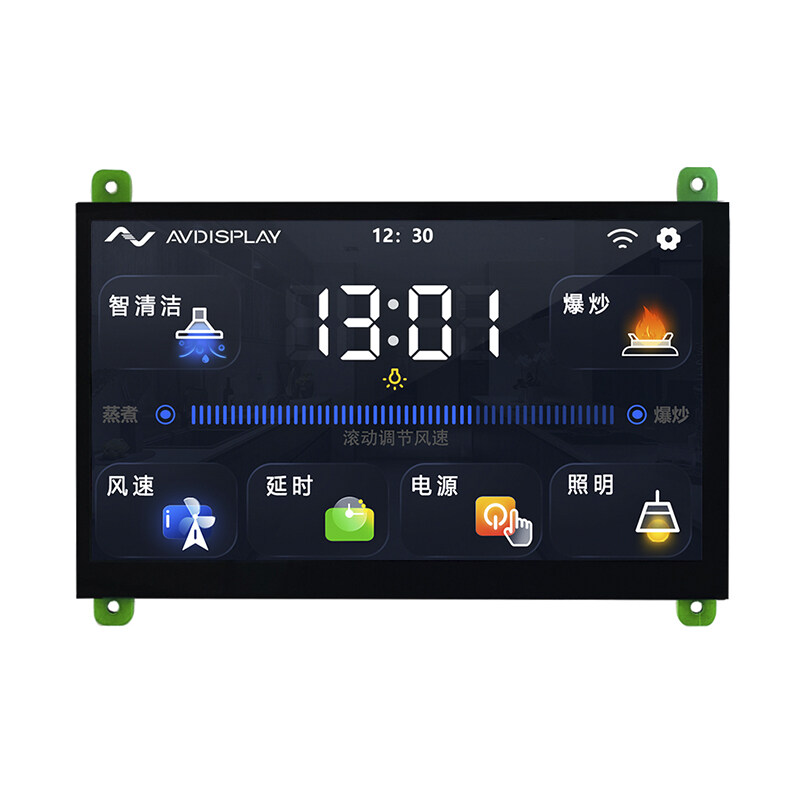Industrial touch screen displays are transforming the way businesses operate, providing intuitive, durable, and efficient interfaces for a variety of applications. This FAQ blog will address common questions about industrial touch screens, helping you understand their benefits, applications, and considerations for choosing the right display. Let’s dive into the world of industrial touch screen displays!
What Are Industrial Touch Screen Displays?
How Do They Differ from Consumer Touch Screens?
Industrial touch screen displays are designed for use in harsh environments where consumer-grade screens would fail. They are built to withstand extreme temperatures, dust, moisture, and mechanical impact. Unlike consumer touch screens, industrial versions often have higher durability, enhanced reliability, and longer lifespans.
What Types of Touch Screen Technologies Are Used in Industrial Displays?
Industrial touch screens typically use one of the following technologies:
- Resistive Touch: Uses pressure to detect touch and works well with gloves or styluses. It’s durable and cost-effective.
- Capacitive Touch: Senses touch through the electrical properties of the human body. Known for its responsiveness and multi-touch capabilities.
- Infrared (IR) Touch: Uses IR light to detect touch points, providing high durability and the ability to function with various input methods.
- Surface Acoustic Wave (SAW): Uses ultrasonic waves that pass over the touch screen. It's known for high clarity and durability but can be affected by contaminants.

Why Choose Industrial Touch Screen Displays?
What Are the Benefits of Using Industrial Touch Screens?
Industrial touch screens offer numerous advantages, including:
- Durability: Resistant to extreme conditions, including temperature variations, moisture, and dust.
- Reliability: Designed for continuous use in demanding environments.
- Versatility: Suitable for various applications, from manufacturing to healthcare.
- Ease of Use: Intuitive interfaces reduce the learning curve and improve productivity.
- Customizability: Can be tailored to specific industry needs with various sizes, resolutions, and touch technologies.
How Do They Improve Efficiency in Industrial Settings?
Industrial touch screens streamline operations by providing real-time data access, easy navigation, and quick response times. They reduce the need for physical buttons and switches, minimizing maintenance and training costs. This leads to increased productivity and faster decision-making.
What Are the Common Applications of Industrial Touch Screen Displays?
Manufacturing
In manufacturing, touch screens are used in control panels, automation systems, and machine interfaces. They help monitor and control processes, reducing downtime and improving efficiency.
Healthcare
Healthcare applications include patient monitoring systems, medical devices, and information kiosks. Industrial touch screens provide reliable, easy-to-clean interfaces that meet stringent hygiene standards.
Retail and Hospitality
In retail and hospitality, touch screens enhance customer service through self-service kiosks, point-of-sale systems, and digital signage. They improve transaction speed and offer interactive customer experiences.
Transportation and Logistics
Touch screens in transportation and logistics are used for fleet management, tracking systems, and ticketing kiosks. They help manage operations efficiently and provide real-time information to users.
How to Choose the Right Industrial Touch Screen Display?
What Factors Should Be Considered?
When selecting an industrial touch screen display, consider the following factors:
- Environment: Assess the operating environment, including temperature, humidity, and exposure to dust or chemicals.
- Durability: Ensure the display can withstand mechanical impacts, vibrations, and other physical stresses.
- Touch Technology: Choose the appropriate touch technology based on the application’s requirements (e.g., glove use, multi-touch needs).
- Size and Resolution: Select the size and resolution that best fits the application and ensures clear visibility.
- Mounting Options: Consider how the display will be mounted (e.g., panel mount, VESA mount) and ensure compatibility with existing infrastructure.
- Connectivity: Check for necessary connectivity options, such as USB, HDMI, or Ethernet.
Are There Any Specific Certifications to Look For?
Yes, industrial touch screens may need to comply with certain certifications, including:
- IP Rating: Indicates the level of protection against dust and water. Higher ratings (e.g., IP65) offer better protection.
- NEMA Rating: Specifies the enclosure type for various environments, such as industrial or outdoor use.
- ATEX Certification: Required for equipment used in explosive atmospheres.
How to Maintain and Troubleshoot Industrial Touch Screen Displays?
What Are the Best Practices for Maintenance?
Proper maintenance ensures the longevity and performance of industrial touch screens. Here are some best practices:
- Regular Cleaning: Use appropriate cleaning solutions and soft cloths to remove dust, dirt, and contaminants without damaging the screen.
- Routine Inspections: Periodically inspect the display for signs of wear or damage and address any issues promptly.
- Protective Covers: Use protective covers or films to shield the screen from scratches and impacts.
How to Troubleshoot Common Issues?
If you encounter issues with your industrial touch screen display, consider the following troubleshooting steps:
- Unresponsive Touch: Check the connections and ensure the screen is properly calibrated. Restart the device and update drivers if necessary.
- Display Flickering: Verify the power supply and connections. Inspect for electromagnetic interference and resolve any grounding issues.
- Calibration Problems: Recalibrate the touch screen using the device’s calibration tool or software.
Future Trends in Industrial Touch Screen Displays
What Innovations Are Emerging in the Industry?
The industrial touch screen display industry is continually evolving with new innovations, such as:
- Enhanced Durability: Development of more robust materials and coatings to withstand extreme conditions.
- Improved Touch Sensitivity: Advances in touch technology to support more precise and responsive interactions.
- Integration with IoT: Touch screens connected to IoT networks for real-time data exchange and improved automation.
- Energy Efficiency: Designs focusing on lower power consumption and sustainable manufacturing processes.
How Will AI and Automation Impact the Future of Industrial Touch Screens?
Artificial intelligence (AI) and automation are set to revolutionize industrial touch screens by enabling predictive maintenance, adaptive interfaces, and enhanced decision-making capabilities. AI can analyze touch patterns and user behavior to optimize the interface and improve operational efficiency.
Conclusion
Industrial touch screen displays are integral to modern industrial applications, offering durability, reliability, and versatility. Understanding the different technologies, benefits, and considerations for choosing the right display is crucial for making informed decisions. As technology advances, industrial touch screens will continue to evolve, bringing even more innovative solutions to various industries. By staying informed and adapting to these changes, businesses can leverage these powerful tools to enhance their operations and drive success.


